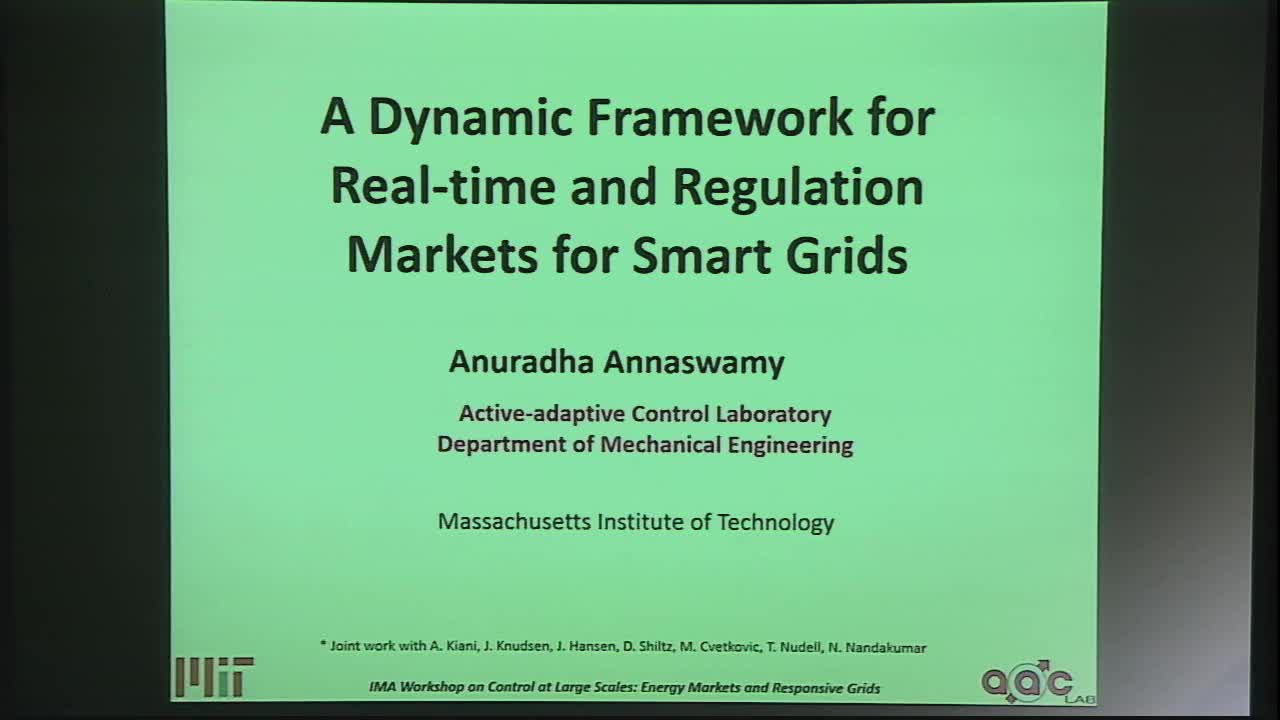A Dynamic Framework for Real-time and Regulation Markets for Smart Grids
Presenter
May 12, 2016
Keywords:
- Dynamic Market Mechanism, Wholesale Markets, Regulation Markets
Abstract
Two major players in a smart grid are renewables and flexible consumption. The former is necessitated by global concerns of sustainability and greenhouse gas emissions, and dwindling resources of fossil fuels. The latter is enabled through the feasibility of fast and large-scale communication and the growing acceptance and economic potential of flexible consumption.
Introduction of these two players brings with it a host of challenges, many of which stem from the introduction of complex and uncertain dynamics at various time-scales. In order to assess the impact of these dynamics, and realize the desired goals of a smart grid, of delivering affordable and reliable power to all end-users, an end-to-end framework that is dynamic, and allows the deployment of various analysis and synthesis tools of stability, estimation, optimization, and control is needed. This framework should not only encompass the physically relevant, and traditional timescales of frequency and voltage control, but economically relevant market-based decisions for planning and economic dispatch. More importantly, this framework should address the interactions between the former active-control components that manipulate physical variables and the latter transactive-control components that manipulate economic variables. In this talk, recent results developed in the AAC laboratory at MIT related to the development of such a dynamic framework will be presented.
We will describe a dynamic market mechanism (DMM) which combines real-time market and frequency regulation allowing market players, including renewable generators and flexible consumers, to iteratively negotiate electricity prices at the wholesale level while using the most recent information on the available wind power and the quality of grid frequency. Main features of this DMM are (i) a Newton-Raphson-based method which leads to fast convergence to the optimal dispatch, (ii) use of an aggregated frequency error as a feedback signal for the negotiation process which leads to reduced regulation capacity requirements. We will also describe a new dynamic regulation market mechanism (DRMM) that facilitates Automatic Generation Control (AGC) and ensures optimal frequency regulation through direct control of both generators and flexible loads. Main features of this DRMM method are its low requirement on communication, an ability to accommodate shiftable loads, and the ability to achieve tight frequency control in the presence of disturbances. The advantages of the DMM and the DRMM components as well as the overall dynamic framework that we have developed will be illustrated using several large-scale IEEE grid-models.
